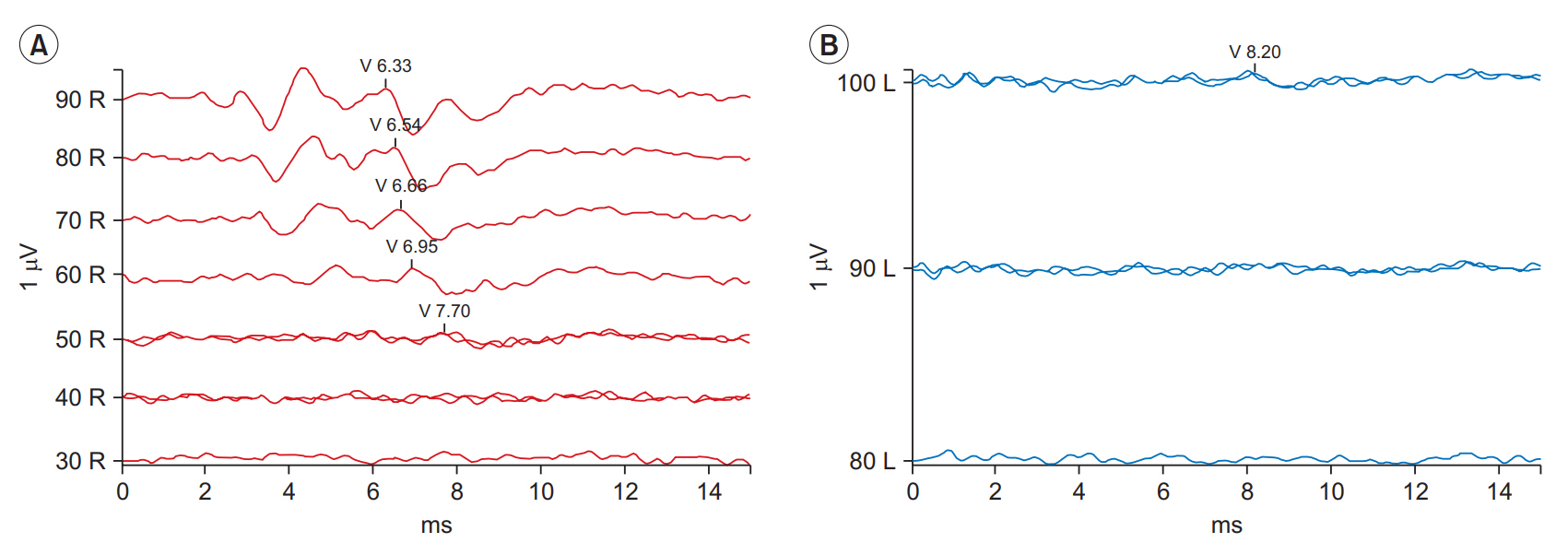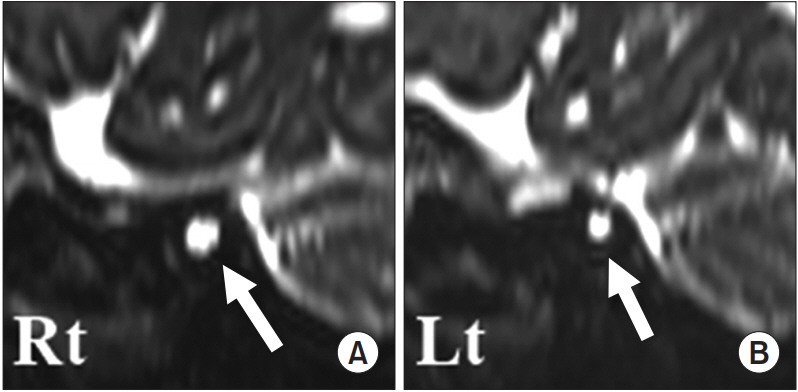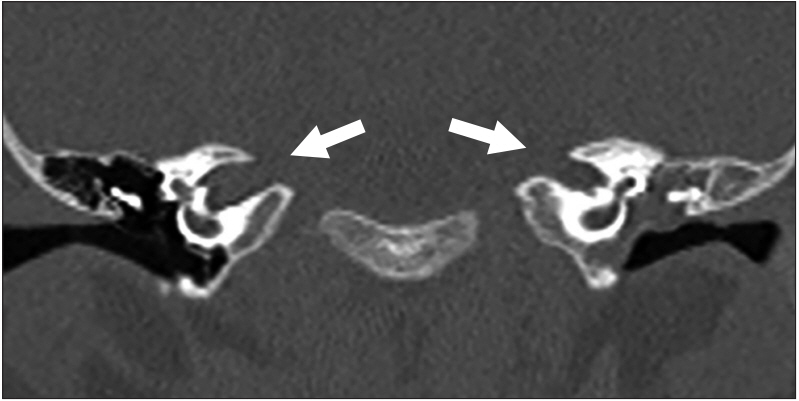Ann Rehabil Med.
2020 Jun;44(3):256-259. 10.5535/arm.19148.
Rare Occurrence of Internal Auditory Canal Stenosis Accompanied With Congenital Facial Palsy in a 3-Month-Old Infant: A Case Report
- Affiliations
-
- 1Department of Physical Medicine and Rehabilitation, Haeundae Paik Hospital, Inje University College of Medicine, Busan, Korea
- 2Department of Rehabilitation Medicine, Epworth HealthCare Epworth Richmond, Melbourne, Australia
- 3Department of Radiology, Haeundae Paik Hospital, Inje University College of Medicine, Busan, Korea
- KMID: 2504446
- DOI: http://doi.org/10.5535/arm.19148
Abstract
- Internal auditory canal (IAC) stenosis with hypoplasia of the facial and vestibulocochlear nerves is a rare cause of congenital facial palsy. In this case report, a 3-month-old female infant was referred for a neurological developmental assessment for developmental delay and congenital facial palsy. Upon evaluation of developmental delay, hearing loss was detected. Following a magnetic resonance imaging scan of the brain and a computed tomography scan of the temporal bone, IAC stenosis with hypoplasia of facial and vestibular nerves was diagnosed. This is a rare case of IAC stenosis in an infant with initial presentations of left facial palsy and developmental delay associated with hearing loss in the left ear. We strongly suggest that IAC stenosis be considered a cause of congenital facial palsy in infants, especially in patients with developmental delay. In infants with congenital facial palsy, a thorough physical examination and neurological developmental assessment should be performed.
Figure
Reference
-
1. Jemec B, Grobbelaar AO, Harrison DH. The abnormal nucleus as a cause of congenital facial palsy. Arch Dis Child. 2000; 83:256–8.
Article2. Falco NA, Eriksson E. Facial nerve palsy in the newborn: incidence and outcome. Plast Reconstr Surg. 1990; 85:1–4.3. da Fonseca Filho GG, de Medeiros Cirne GN, Cacho RO, de Souza JC, Nagem D, Cacho EW, et al. Neonatal peripheral facial paralysis’ evaluation with photogrammetry: a case report. Int J Pediatr Otorhinolaryngol. 2015; 79:2473–5.
Article4. Baek SK, Chae SW, Jung HH. Congenital internal auditory canal stenosis. J Laryngol Otol. 2003; 117:784–7.
Article5. Lin KM, Huang CC, Leung JH. Congenital unilateral facial palsy and internal auditory canal stenosis. Pediatr Neurol. 2008; 39:116–9.
Article6. Yates JA, Patel PC, Millman B, Gibson WS. Isolated congenital internal auditory canal atresia with normal facial nerve function. Int J Pediatr Otorhinolaryngol. 1997; 41:1–8.
Article7. House JW, Brackmann DE. Facial nerve grading system. Otolaryngol Head Neck Surg. 1985; 93:146–7.
Article8. Sakashita T, Sando I. Postnatal development of the internal auditory canal studied by computer-aided three-dimensional reconstruction and measurement. Ann Otol Rhinol Laryngol. 1995; 104:469–75.
Article9. Pagani JJ, Thompson JW, Hanafee WN. Pitfalls in the radiographic diagnosis of stenosis of the internal auditory canal. Laryngoscope. 1980; 90:322–5.
Article10. Sakina MS, Goh BS, Abdullah A, Zulfiqar MA, Saim L. Internal auditory canal stenosis in congenital sensorineural hearing loss. Int J Pediatr Otorhinolaryngol. 2006; 70:2093–7.
Article
- Full Text Links
- Actions
-
Cited
- CITED
-
- Close
- Share
- Similar articles
-
- Goldenhar's Syndrome (Oculo-Auriculo-Vertebral Dysplasia) with Congenital Facial Nerve Palsy
- Spontaneous migration of a congenital intratympanic membrane cholesteatoma
- A Case of Facial Nerve Schwannoma Presenting as an External Auditory Canal Mass
- A Case of Acoustic Neuroma Presenting as an External Auditory Canal Tumor
- Osteoma of the External Auditory Canal: A Case Report





